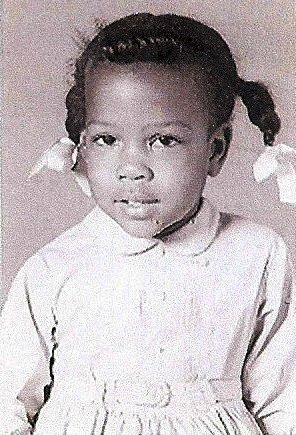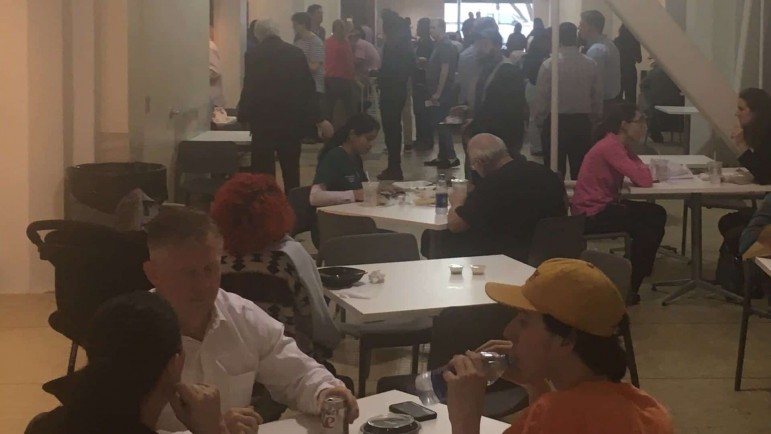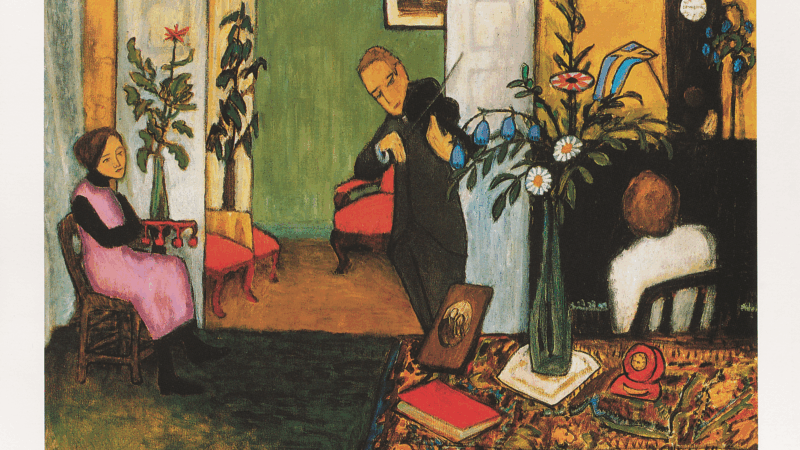The Pizitz Then and Now
Pizitz department store used to be a shopping destination downtown, but now this building at the corner of 19th Street and Second Avenue North has a new body, and it’s creating buzz in Birmingham. WBHM’s Sherrel Wheeler Stewart takes us to Pizitz then and now.
In the mid 1960s at Christmas time, nothing was more important than a trip downtown with my mom and dad to stroll through the enchanted forest at Pizitz department store.
Snow scenes lined a narrow tunnel in the store. It was punctuated with glistening lights and reindeer with bobbing heads. There were little elves in their candy kitchen preparing goodies. You could watch the elves stitch and sew. At the end of the forest, Santa sat on his velvet throne.
There was Christmas music playing – lots of it, almost everywhere. At times I questioned whether Santa was real, but the atmosphere and excitement of Pizitz at Christmas convinced me. This was the place where I made Santa promise to bring me a walking doll and a big bicycle, and he did.
This store carried everything from furniture to furry slippers. But for me, it was all about the forest.
It took a lot of work for me to earn that trip. I got into a lot of trouble as a kid, so I had to be good – real good. That meant being quiet in school, doing my chores at home, and eating my vegetables.
I looked forward to Pizitz throughout the year. It was where my parents often bought my cute clothes like the blue and white dress with satin sash with the patent leather Mary Jane shoes.
In the late 1970’s, I experienced a different side of Pizitz. I worked there between high school and the start of college. Basic typing skills and a pleasant phone voice, not to mention my dad’s connection with one of the managers, opened the door for a desk job in the credit department.
Despite my job, I couldn’t help but wonder what it was like just 15 years earlier in our city’s segregated past. Back then, if you were black, you couldn’t get office jobs in places like Pizitz. You were not served in the store restaurants or allowed to eat at the lunch counters.
Pizitz had a winding hardwood staircase near the 19th Street entrance that led to the Mezzanine Restaurant. I was making about minimum wage, and for 45 minutes, I’d sit down in that restaurant living large. I’d dine on a crisp white tablecloth treating myself to a club sandwich and French onion soup with the gooey cheese on top and long onion strips floating beneath.
In 1988, the downtown Pizitz closed. The fond memories of my childhood and first job were there behind the glass doors that slowly turned brown from dust and grit.
I feared it would never reopen. I thought my hometown downtown would suffer a painful death, never to rise again.
There always seemed to be a plan on the table for restoring Pizitz, and those plans always fell through – not enough investors, not enough community support, skepticism over downtown’s rebirth.
Recently, though, something clicked. Developers received tax credits to make the project more affordable, and they came up with a new concept that fit with city growth. So, now Pizitz is a dining hall with retail on the lower floors and residences above.
For the first time in 30 years, I returned to Pizitz a few days ago, anxious to make new memories in the food hall. I didn’t know where to go or what to do. But I can tell you there was more energy in this place than what I remembered as a child at Christmas.
The first floor was packed and humming, almost like a mini Grand Central Station. Everyone was fixed on getting food. In the same area where they used to sell women’s hosiery, millennials served up Polynesian fare.
Across the way, I spot a friend from church passing out waffles and wings, and it turns out she’s launched a new restaurant. There’s also Mexican food, coffee, Mediterranean and Puerto Rican cuisine …you get the idea.
In its prime, you would run into almost anyone from any side of town in Pizitz. The same was true of my lunchtime stroll – then and now, a place to be. Imagine if we had similar places to be all over town – in communities like Roebuck, West End, Ensley, Glen Iris. That’s when Birmingham truly becomes a vibrant metropolitan city.
Viral global TikToks: A twist on soccer, Tanzania’s Charlie Chaplin, hope in Gaza
TikToks are everywhere (well, except countries like Australia and India, where they've been banned.) We talk to the creators of some of the year's most popular reels from the Global South.
This painting is missing. Do you have it?
An important work from a rediscovered artist has been absent from public view since the 1970s. A New York curator is hunting for it.
Memory loss: As AI gobbles up chips, prices for devices may rise
Demand for memory chips currently exceeds supply and there's very little chance of that changing any time soon. More chips for AI means less available for other products such as computers and phones and that could drive up those prices too.
Brigitte Bardot, sex goddess of cinema, has died
Legendary screen siren and animal rights activist Brigitte Bardot has died at age 91. The alluring former model starred in numerous movies, often playing the highly sexualized love interest.
For Ukrainians, a nuclear missile museum is a bitter reminder of what the country gave up
The Museum of Strategic Missile Forces tells the story of how Ukraine dismantled its nuclear weapons arsenal after independence in 1991. Today many Ukrainians believe that decision to give up nukes was a mistake.
Jeffrey R. Holland, next in line to lead Church of Jesus Christ of Latter-day Saints, dies at 85
Jeffrey R. Holland led the Quorum of the Twelve Apostles, a key governing body. He was next in line to become the church's president.










